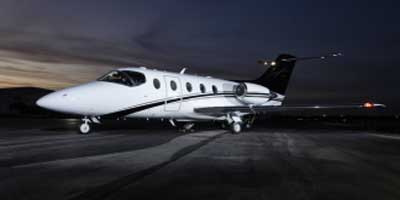
Soaring High: The Hawker 400 – A Marvel of Aviation History
The Hawker 400 is more than just an aircraft; it's a testament to human ingenuity and engineering excellence. From its first flight to its modern variations, the 400's story is one of innovation and tenacity.
INTRODUCTION
The Hawker 400, a twinjet corporate aircraft, was introduced by British Aerospace (BAe) in the mid-1980s. Designed for both business and pleasure, this model was initially produced by Beechcraft, a well-known American aircraft manufacturer, under the name Beechjet 400. The Beechjet 400 eventually transformed into the 400 when Raytheon Aircraft (now Hawker Beechcraft) acquired BAe's product line in the 1990s.
HISTORY
The 400 began its journey as a military trainer aircraft, the Mitsubishi MU-300 Diamond, before Beechcraft saw its potential for the corporate market. The aircraft was redesigned, renamed, and reborn as the Beechjet 400, which was later upgraded to the Hawker 400 when Raytheon Aircraft purchased the rights. The 400 made its first flight in 1985, marking a significant milestone in aviation history.
DESIGN
The Hawker 400 features a low-swept wing design with a T-tail, offering enhanced stability and performance. With a wingspan of 43.5 feet, a length of 48.4 feet, and a maximum takeoff weight of 16,100 pounds, it's a compact yet powerful machine. It has a seating capacity for up to nine passengers, making it a suitable choice for small groups.
PERFORMANCE
The Hawker 400 is renowned for its superior speed, range, and fuel efficiency. Its top speed is approximately 539 mph (869 km/h), with a range of up to 1,693 miles (2,726 kilometers) and a service ceiling of 45,000 feet. It also boasts a commendable fuel efficiency for its class, thanks to its Pratt & Whitney JT15D-5 turbofan engines.
TECHNOLOGY
What sets the Hawker 400 apart is its state-of-the-art technology. The aircraft is equipped with a Pro Line 4 avionics suite from Rockwell Collins, complete with EFIS and digital radios. Its innovative safety systems include an automatic dependent surveillance-broadcast (ADS-B), terrain awareness, and warning systems (TAWS), which enhance its flight capabilities and safety.
VARIANTS
There are several variants of the 400, including the 400A and 400XP models. The 400XP variant features increased maximum takeoff weight and enhanced interior options, while the 400A is more basic but still robust in its performance.
OPERATORS
The 400 is a popular choice among various private charter companies, corporations, and military institutions globally. The U.S. Air Force, for example, uses a modified version known as the T-1 Jayhawk for training purposes.
In conclusion, the Hawker 400's storied history, innovative design, and advanced technologies make it a significant figure in aviation history. We encourage you to share this article with anyone interested in the fascinating world of aviation.
Hawker 400 Specifications:
| Category | Specification |
|---|---|
| Manufacturer | Hawker Beechcraft |
| First Flight | 1985 |
| Wingspan | 43.5 feet (13.3 meters) |
| Length | 48.4 feet (14.8 meters) |
| Weight | 16,100 lbs (7,303 kg) |
| Seating Capacity | 7-9 passengers |
| Top Speed | 539 mph (869 km/h) |
| Range | 1,693 miles (2,726 km) |
| Ceiling | 45,000 feet (13,716 meters) |
| Engines | Pratt & Whitney JT15D-5 |
This article uses material from various web resources and Wikipedia article, released under the Creative Commons Attribution-Share-Alike License 3.0.

